

Steve Priest
-
Posts
146 -
Joined
-
Last visited
Content Type
Profiles
Forums
Events
Gallery
Blogs
Store
Posts posted by Steve Priest
-
-
It was painted at Braunston, almost certainly the work of Frank Nurser
-
I am pretty sure that the handbowl was painted by Bob Bush, and would probably date from the early 1970’s, the cabin block is well painted, and I would guess is fairly old, it seems to be less stylised than a lot of later work. I have no idea who painted it, or where it was painted though
-
 1
1
-
-
35 minutes ago, Victor Vectis said:
Oooooooo.......
You'll get told off for doing that!
ETA (One might wonder how I know this)
If you get told off again show them this -“closing is by gravity”!
Yes, there is a rubber pad to absorb the shock, I understand that there were two more pads fitted to the bottom of the paddle frame which are no longer fitted after changing from wood to plastic paddles
-
 3
3
-
-
4 minutes ago, alan_fincher said:
Am I imagining it, or wasn't it priced at about £105k when first brought to market?
If so then just under £80K represents a hug reduction, but for what is still I believe an empty shell, still seems very over-priced.
I am probably the last person who should pass comment on what is acceptable as cabin arrangements on a converted boat. FLAMINGO could be considered just as quirky as HYDRUS. Different things appeal to different owners, but I really don't get having a front section that simulates "clothed up", but not extending if forward over the whole hold space to have a deck board in the correct position.
I have no doubt that it was intended to have the deck board in the correct place, and the cloths to extend back to the start of the conventional shaped cabin, so that the steel cloth shaped piece would not be seen
-
 2
2
-
-
14 hours ago, zenataomm said:
It always grates on my eyes to see a a butty's backend going forward.
I take your point, but in this case it’s a fore end going forwards!
9 hours ago, Tonka said:Yes but it will need new doors fitting.
Yes, the doors are just temporary.
9 hours ago, magnetman said:
Some people might want really nice wooden doors others would want a steel door with wooden panels.
The back cabin is wooden, fitting steel doors to it would be a strange decision
15 hours ago, magnetman said:While we we are criticising it I also think the guard irons are too thin.
Nope, two inch feather edge, riveted to the steelwork, and spiked to the wooden gunwhales and cants
-
 2
2
-
-
That sounds ok to me, my porthole is centred at 43 1/2” from the back bulkhead.
-
My measurements were taken from the back edge of the bulkhead, i.e. the back of the doors when closed
-
The following measurements are from my own little Woolwich, and were from measuring mainly waterways cabins over the years. There is a bit of latitude on these, they weren’t all the same, but this is what I ended up using.
Measured from the back bulkhead forward to the centreline of each.
Chimney collar 25”
Bull’s eye. 49”
Mushroom v. 88”
Letterbox vent ( again to the centre ) 23 1/4”, with the top edge 6 3/4 below the top of the handrail and parallel to it
Slide hole (aperture size, so measured to the back of the timber facing, to the edge of the runner itself)
width at bulkhead 20 1/2”, width at front 19 3/4” depth 22”
Is your cabin fitted out? If so, you will need to bear that in mind, especially if the internal proportions are not standard, such as if the bed has been made wider than normal at the expense of the range shelf.
Woolwich boats had 5 1/2” fabricated chimney collars, made from a piece of around 5mm plate and a piece of tube 5 1/2” o.d., and the space between the handrail and slide runner is fairly tight on motor boats. For my money I would certainly taper the slide, besides it will allow a little more space for the chimney collar. Even with steel slide runners, I would fit a wooden slide, steel ones are too heavy and clumsy I find. If you do need to put it a little further forwards, make sure that the front bolt is clear of the rear table bulkhead, especially if the range shelf is not as long as it should be.
The bull’s eye the dimension I have given will mean that it is well clear of the bed, the cabin frame, and valance. If the bed is wider than the standard 39” you may have to move it back a bit, but if you move it back too far then the slide will clobber it when fully open
-
 1
1
-
-
1 hour ago, magnetman said:
I stand corrected. It was the depth which threw me. I'm sure you are right.
Yes, with the increase in the depth and the guard lowered it has a look of one of the post war counters
-
15 hours ago, magnetman said:
I’ve just been looking at this, and the back does actually appear to be original. Under the rear porthole you can see the ends of the original guards, the top guard and a short length of the counter bottom guard below it. The guard that now goes around the counter is a newer one, the top line of which follows the line of the bottom of the old one. If you zoom it you can see the pitting which would have been behind the old guard, and you can also see where the rivet holes have been welded up. You can also see the top of a plate welded on to increase the depth of the counter ( and thus decrease the draft ) which has changed the overall look of the counter.
-
 2
2
-
-
58 minutes ago, ditchcrawler said:
I am guessing there are about 500 rivets in that cabin
I would doubt quite that many, 2” pitch on the roof flanges, roof seam ( the roof is fitted in two pieces ), and the bulkhead, 2 3/8” pitch on the framing. My guess would be 300 - 350
-
- Popular Post
- Popular Post
On 25/09/2022 at 15:02, James Owen said:Albeit advertised with some woefully inaccurate information.
Well, it made me smile! - “ extensively restored by Brinklow Boats in 1990 with a full traditional back cabin by Simon and Rex Wain”
Simon, Rex and I didn’t form Brinklow Boat Services until 1997, Kestrel was restored by the Warwickshire Flyboat Company, when the three of us still worked there. The steelwork was done by myself, and unless I am very much mistaken, the cabin was fitted out by Don Donnelly, subsequently grained and decorated by myself.The work was done for a chap called Mike Samson who actually bought the boat from Willow Wren, but did nothing with it for several years. Once we had done the work he bought the Hyperion and paired it with that. It was actually my first attempt at replacing a Northwich riveted cabin, the old one was way past restoring, but at least we had it for a pattern
Here are a few pictures from the archive:-
-
 9
9
-
On 30/07/2021 at 17:54, koukouvagia said:
This is the set up on a josher (Owl). Someone has tried to make the rudder a little easier to turn by adding a small balance strip to the back edge. This meant chopping a piece off the bracing strut. Also someone has chopped a D shaped hole for the same reason.
I should point out that in my opinion neither modification was very successful - the boat is pretty heavy to steer round sharp bends.
On 30/07/2021 at 18:52, Tonka said:strange that the cup for the rudder is not in the skeg
Not really, the set up on Owl is exactly as would be expected in a Josher of that age (1928), apart from the D shaped hole and the small balance plate. The skeg is a flat steel plate 1/2” or 5/8” thick, and approximately eight feet long, which would run ( in a composite boat) forwards under the bottom, and would be bolted up through the bottom boards and the keelson. There are two tabs of angle riveted to the skeg which are bolted through the end of the stern post, and a further two angle tabs which are bolted through the bottom of the vertical skeg bar, both pairs of angles are visible in the photo. A third pair riveted to the sole plate are bolted through the top of the skeg bar, hence the skeg bar is held on with four bolts and is removable. The skeg itself, being of a flat piece of plate, would not be strong enough without the skeg bar to reinforce it, and the bottom rudder cup is riveted to the skeg bar as well. This arrangement was the same on many wooden boats.
Yarwoods continued to build Joshers with this arrangement until 1934, when they changed to a one piece forged sternpost skeg and cup to the same design as Grand Union boats. I understand that the last one in the old style was the Dory, the first of the new was the Bramble. In the old style the rudder post is vertical, in the new the rudder post is angled backwards (at the top) so that the rudder is self centring, which also made these boats lighter to steer, as it gave more leverage at the height of the tiller
-
 1
1
-
-
The sole plate is the bottom of the counter, the uxter plates are the triangular plates running forwards from it at the top of the swim
-
 2
2
-
-
It’s a little Woolwich so it can’t be Water Sprite, but for my money it is a normal water bus, the roof is too rounded and the front windows aren’t right for Rambler
-
IMO that can was painted by Dennis Clarke’s brother Colin, but interestingly enough the example that David refers to as being by Frank Nurser is actually by Dennis himself
-
And just to make it clear, this was not Nelson’s steamer Jason, which had been sold on prior to the Jason ll being built. Jason ll was a diesel boat
-
As far as I know, the original Jason of Jason’s trip was built by Nurser’s in 1924 for Charles Nelson & co., the cement manufacturer from Stockton, as Jason ll. On disposal of the Nelson fleet in 1935, Jason ll went to Samuel Barlow in Braunston, and entered the Barlow fleet as Jason
-
2 hours ago, pete harrison said:
My understanding (from Trevor Maggs) is that the fore ends of both ANTONY and GORSE were constructed by Charles Watts Engineering, Rugby, and this was following their acquisition by Willow Wren Hire Cruisers Ltd., Rugby

Yes, that’s right, there is still a picture of the completed hull of Gorse above Charles Watts trade counter
-
7 hours ago, pete harrison said:
I think it worth pointing out that the vast majority of the wooden bottom in PRINCESS ANNE is almost new, being fitted by Brinklow Boat services only a few years ago. This bottom was replaced from the fore end to the engine room, as well as several under the back cabin / engine room with only a few older but perfectly serviceable bottom boards remaining in place. This bottom is made of opepe and will outlast most steel bottoms of a similar age so really is not a negative point, especially on a boat being used for pleasure. I took a look at this bottom a couple of months ago when it was on the dock at Brinklow and it looked very good. PRINCESS ANNE represents remarkable value to my mind and really ought to be snapped up as just about everything has been done (at great expense), let alone it being a boat with a very strong history.
It is a tragedy that almost every composite 'historic' boat has been re-bottomed in steel, and that today's 'enthusiasts' reject a wooden bottom based upon the hearsay of those who know no better or the memories of soggy life expired 1950's elm bottoms of the past. Foreign woods have transformed this situation, and improved construction practice combined with modern adhesives and sealants mean that wooden bottoms, cabins, gunwales, cants, decks e.t.c. can and should be preserved - the alternative is that 'historic' boats will become modern welded steel pleasure boats that only give the outward appearance of being something that they are not

edit - I have deliberately placed this into two separate threads as I think boats with new / fairly new bottoms of foreign wood (opepe) are getting unnecessary bad press. So many potential owners / enthusiasts do not seem to understand that a new wooden bottom should outlast a steel bottom of the same age with the same level of maintenance.
Likewise I’ll reply to this on both threads,
Well said Pete,
I had intended to make the same points myself this evening - you beat me to it
-
 1
1
-
-
5 hours ago, pete harrison said:
I think it worth pointing out that the vast majority of the wooden bottom in PRINCESS ANNE is almost new, being fitted by Brinklow Boat services only a few years ago. This bottom was replaced from the fore end to the engine room, as well as several under the back cabin / engine room with only a few older but perfectly serviceable bottom boards remaining in place. This bottom is made of opepe and will outlast most steel bottoms of a similar age so really is not a negative point, especially on a boat being used for pleasure. I took a look at this bottom a couple of months ago when it was on the dock at Brinklow and it looked very good. PRINCESS ANNE represents remarkable value to my mind and really ought to be snapped up as just about everything has been done (at great expense), let alone it being a boat with a very strong history.
It is a tragedy that almost every composite 'historic' boat has been re-bottomed in steel, and that today's 'enthusiasts' reject a wooden bottom based upon the hearsay of those who know no better or the memories of soggy life expired 1950's elm bottoms of the past. Foreign woods have transformed this situation, and improved construction practice combined with modern adhesives and sealants mean that wooden bottoms, cabins, gunwales, cants, decks e.t.c. can and should be preserved - the alternative is that 'historic' boats will become modern welded steel pleasure boats that only give the outward appearance of being something that they are not

edit - I have deliberately placed this into two separate threads as I think boats with new / fairly new bottoms of foreign wood (opepe) are getting unnecessary bad press. So many potential owners / enthusiasts do not seem to understand that a new wooden bottom should outlast a steel bottom of the same age with the same level of maintenance.
Well said Pete,
I had intended to make the same point myself this evening, you beat me to it.
-
 1
1
-
-
14 minutes ago, pete harrison said:
BINGLEY ? (I do not think it has extra guards but hopefully its owner will comment on this)
Yes, it has
-
 1
1
-
-
7 minutes ago, pete harrison said:
Interestingly the motor does not have the additional guards on the fore end, usually under the fore end top bends

Which , as far as I know, were a waterways addition. I think it is likely that this is in the GUCCC era, if it is waterways it must be fairly early, I wouldn’t doubt 1940’s myself. The motor still has a full size breastwood, the later Waterways replacement ones stopped further forwards, with the deck lid mounted on separate blocks of wood.
The butty, seemingly still loaded, doesn’t have much weight in it, but it must have taken a long time to unload if they are doing it one stick at a time
13 minutes ago, Richard T said:Given that there are three women at the back of the boats is it possible that it is a wartime photo - did the idle women run such a combination? I seem to recall that in one of the books timber to Leicester was mentioned as a load - possibly Emma Smiths book.
Kit Gayford did have a big Woolwich with a big Ricky butty - Battersea and Uttoxeter, but I am not suggesting that is what they are. Has anyone else noticed the poser in the motor’s back end?
-
 1
1
-
-
Yes, that’s the one


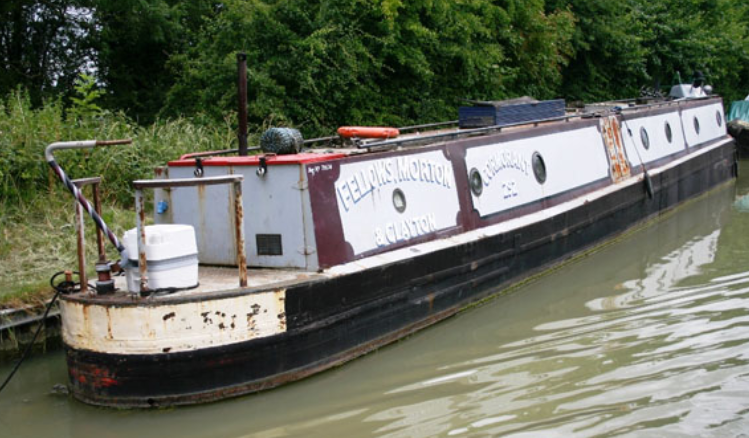
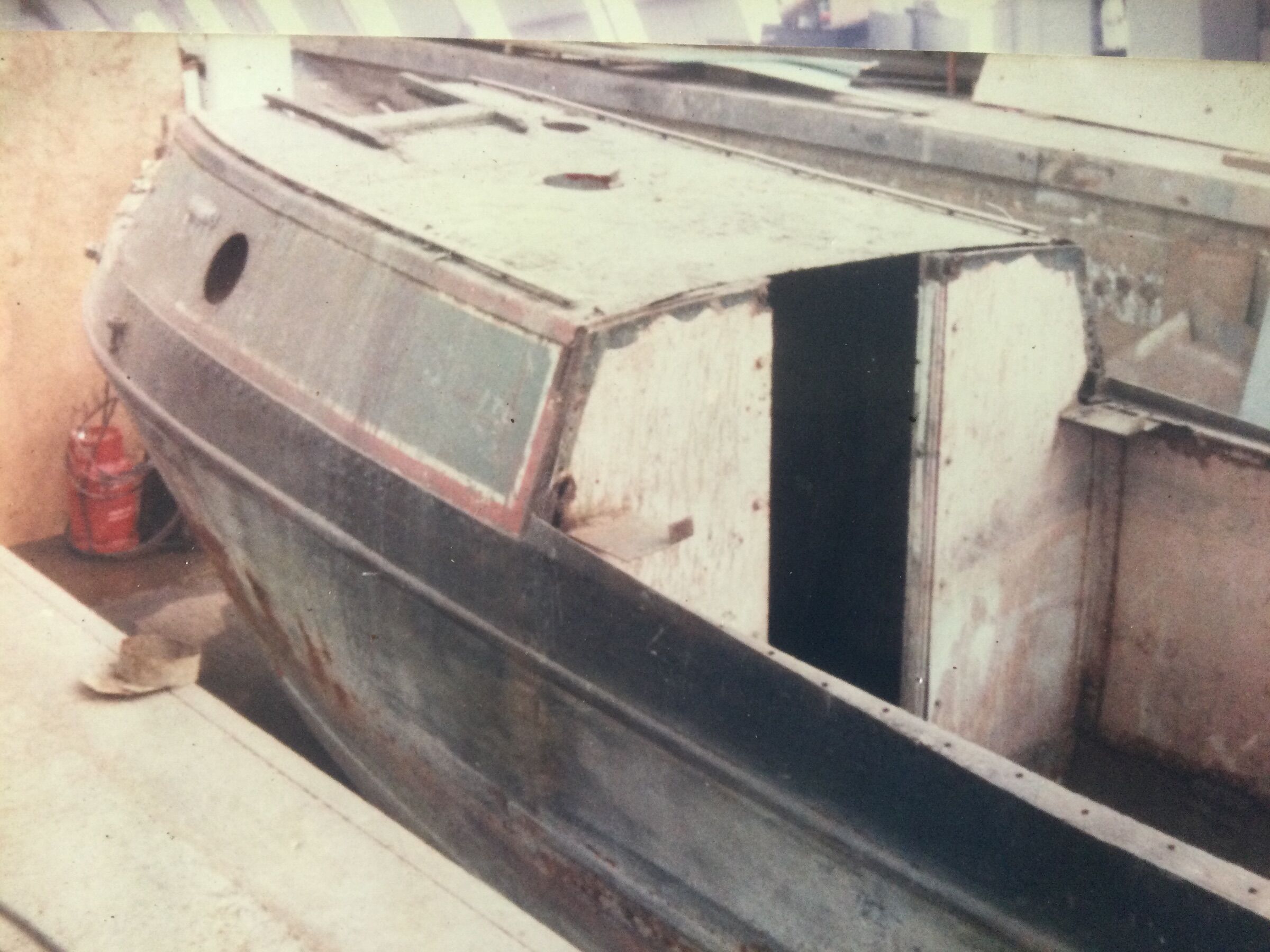
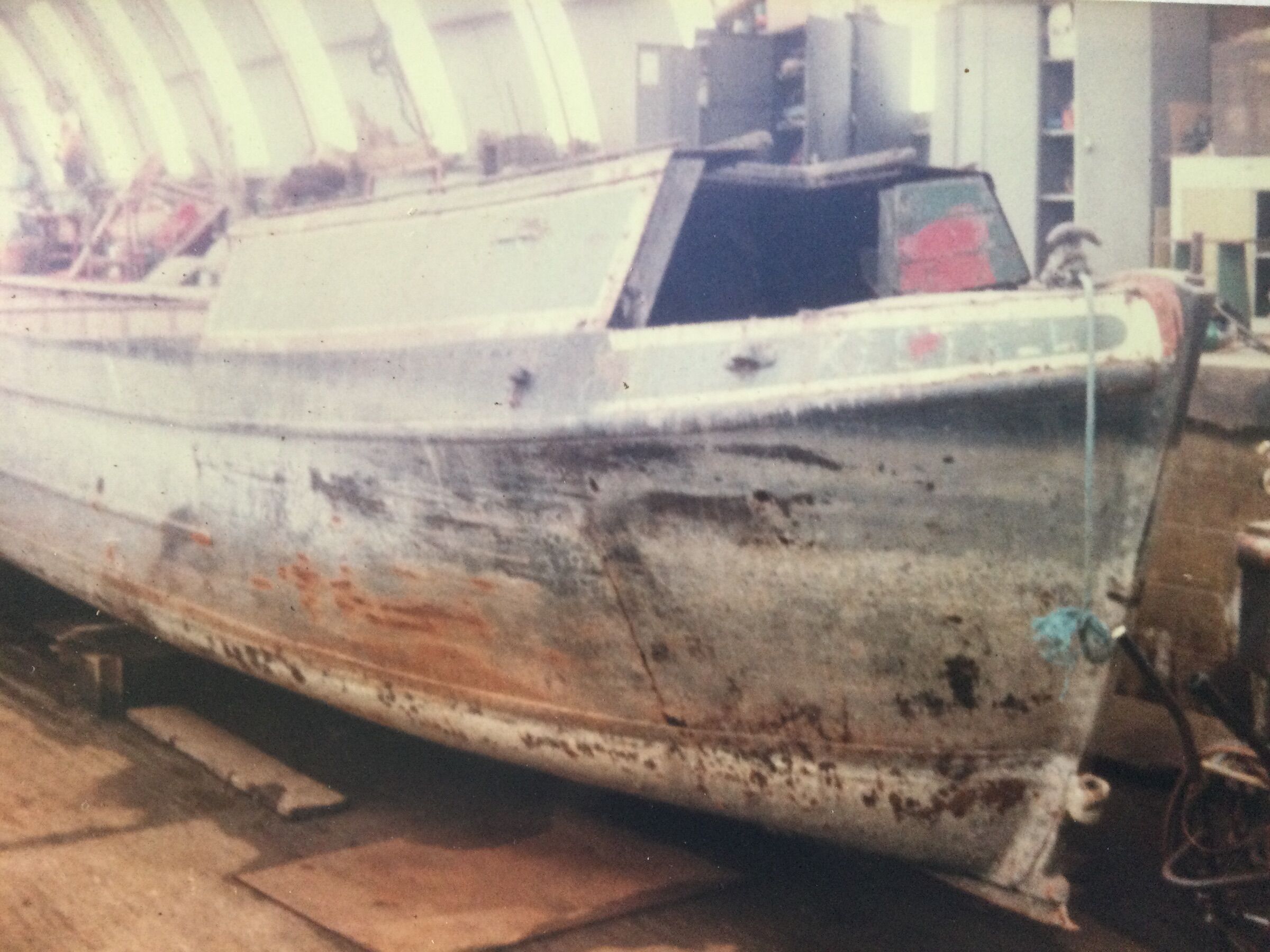
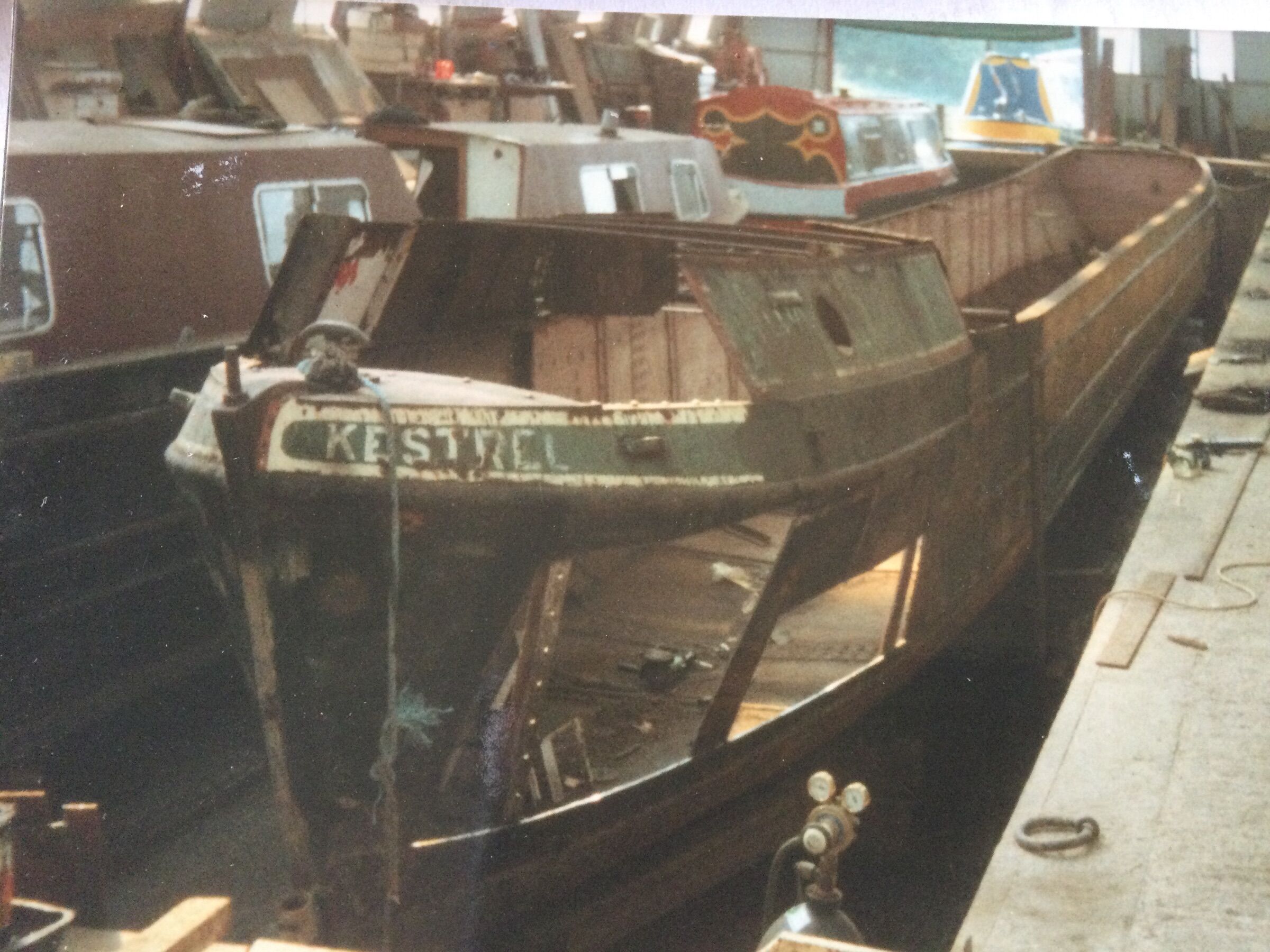
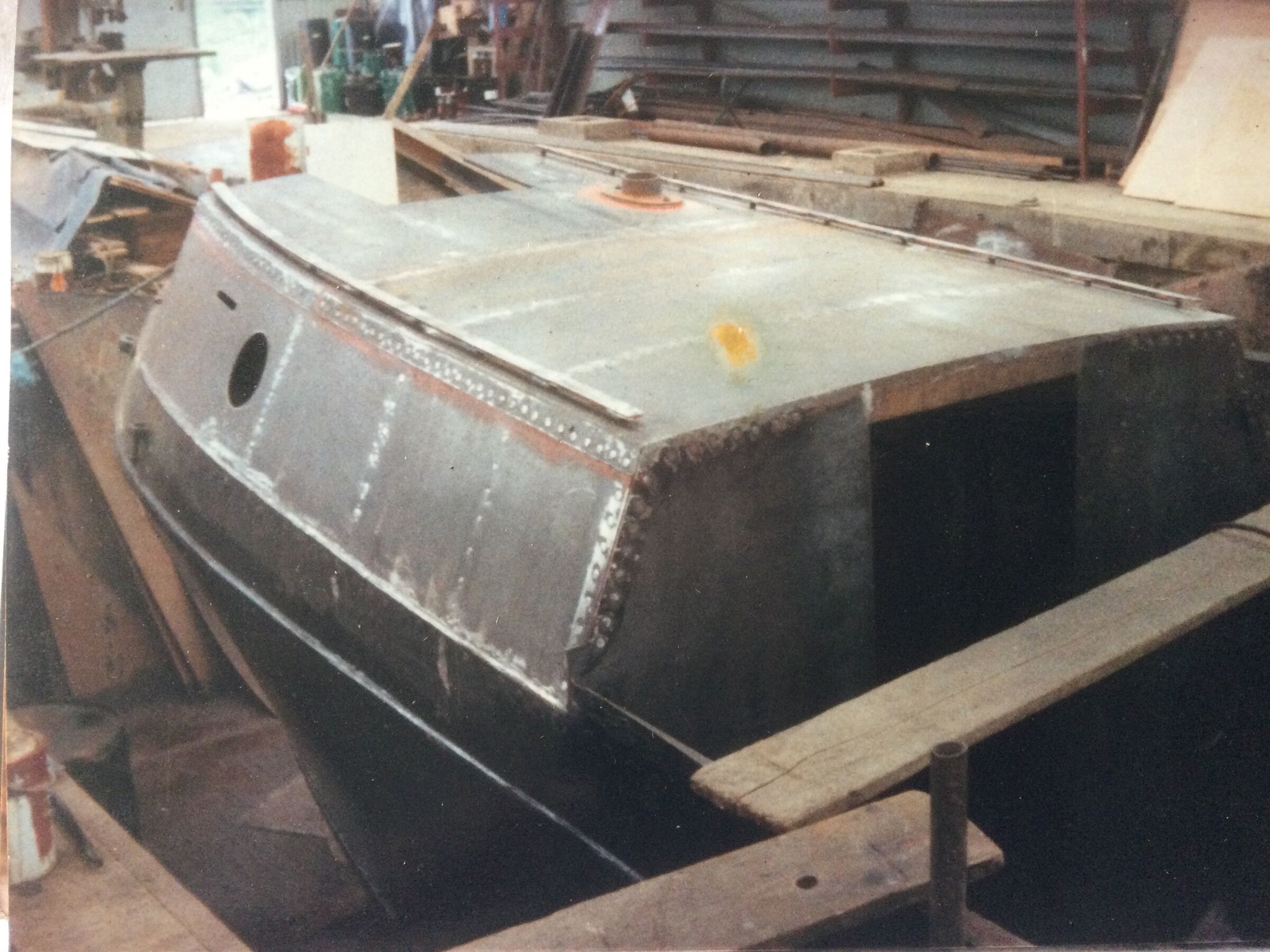

Water can - can anyone help as to possible painter, or origin?
in History & Heritage
Posted
It seems to me that the paintwork is in good condition, but the varnish has gone dark. If you were to VERY carefully strip the old varnish back you would find that it would really come to life. After that, give it a good polish with carnuba wax, or varnish it with artists picture varnish which would give it some protection, but is designed to be easily removed